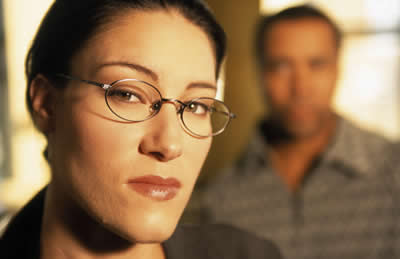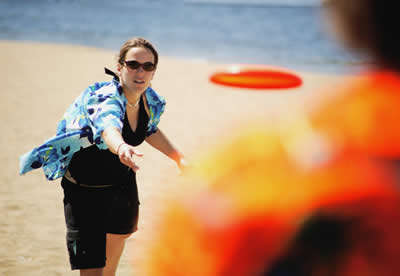|
Deeds Created in 20 Minutes 24/7
EMAILED INSTANTLY |
|
New 10% Rule reduces the concessional cap even lower
Halving of concessional contribution from $50,000 to $25,000 is not the only bad news from 1st July 2009 for high income earners, a slight change in the 10% rule has the impact of reducing this cap even lower, luckily for only for two sets of taxpayers;

Firstly for those taxpayers who work part time and are mostly Self Employed or have passive income and secondly those who work in an employment relationship for part of the year and then are self employed for rest of the year or have only passive income during the year.
These two taxpayer groups from 1st July 2009 will have to satisfy the new stringent 10% rule before they will be eligible to claim personal superannuation contributions as a deduction from their income. In many cases, these two groups will not be able to contribute up to the lower concessional caps even if they are capable of contributing more.
Example
Jim is 48 years old and is a part time teacher and earns $10,000 salary + 9% compulsory superannuation, he also owns a factory with his wife with gross income of $70,000 (his share).
His total assessable income is $80,000
Deductibility rule for 2008-09 year
If Jim wanted to make a personal deductible contribution for the financial year 2008-09 the following test would be used to determine eligibility to claim a deduction:
[(Assessable income + Reportable fringe benefits) associated with employment] /
[Total assessable income + Total reportable fringe benefits for the year] < 10%
10,000 / (10,000 + 70,000) or 12.5%
Jim would have failed the test and it is a no brainer that all Jim has to do is salary sacrifice $2300 in superannuation and then make a deductible personal superannuation contribution.
(10,000 - 2300) / (10,000 - 2300 + 70,000) = 7700/77,700 = 9.9%
After this salary sacrifice Jim can make a further deductible  personal contribution of $46,800 ($900 - 9% SG contribution + $2300 salary sacrifice less $50,000) without paying any excess contribution tax which is 46.5% for all contributions in excess of concessional contribution cap of $50,000. personal contribution of $46,800 ($900 - 9% SG contribution + $2300 salary sacrifice less $50,000) without paying any excess contribution tax which is 46.5% for all contributions in excess of concessional contribution cap of $50,000.
Assuming that Jim makes maximum deductible contribution without attracting any excess contribution tax, his taxable income will be $30,900 ($77,700 less $46,800) and Jim will mostly pay marginal tax rate of 15% inside and outside super.
What has changed from 1st July 2009?
From 1st July 2009 a person can make a personal contribution to a complying superannuation fund and claim a tax deduction as long as four conditions are met , however Sec 290 - 150 (2) (c) has been included to ITAA 1997 in working out the 10% rule.
1) Contributions must be made in the financial year to a complying fund;
2) If you are treated as an employee for Superannuation Guarantee (Administration) Act 1992, then the deduction is available only if less than 10% of total assessable income is from employment activities;
3) If you are under 18 years at the end of the income in which you made the contribution, you must have derived income in the year from the carrying on of a business and you must be less than 75 years old; and
4) You must give the trustee of the fund a notice that you want to claim a deduction in an approved form.
Section 290 - 160 (2) explains employment activities; to deduct the contribution, less than 10% of the total of the following must be attributable to these activities:
(a) your assessable income for the income year;
(b) your *reportable fringe benefits total for the income year;
(c) the total of your *reportable employer superannuation contributions (RESC) for the income year.
Hence the formula has now changed to:
[(Assessable income + Reportable fringe benefits + Reportable Employer Superannuation Contributions*) associated with employment] /
[Total assessable income + Total reportable fringe benefits for the year] < 10%
* Reportable Employer Superannuation Contributions are those concessional super contributions that the individual has discretion over.
 Can Jim make a personal deductible contribution in 2009-10 financial year?
If Jim salary sacrifices $2,300 from his $10,000 salary, it will be included in the numerator only and not in denominator: 10,000 - 2300 + 2300 / 10,000 - 2300 + 70,000 = 10,000 / 77,700 = 12.87% This means that Jim will not be able to make any personal deductible contribution for his rental income even if he decides to salary sacrifice all of his salary income because all the sacrificed income will be included only in the numerator.  This leads us to a situation where the maximum that Jim can contribute into superannuation is the whole of the salary which is $10,000 as salary sacrifice and $900 as compulsory SG contribution. Which means concessional cap for Jim is only $10,900 and not $25,000. Further, Jim can achieve minimum taxable income of $70,000 and any income over the $35,000 will attract tax @ 30% + medicare levy. Jim will pay more tax. What if Jim is over 55 years?
Assume the same figures as above and in addition to $10,000 salary Jim has a Transition to retirement pension from a superannuation interest of $400,000 (taxable component) and has similar rental income of $70,000. The question again is: Can Jim make a deductible personal contribution? When Jim withdraws minimum amount of 2% of capital value of Pension $400,000 or $8,000?
The formula is:
10,000 (salary income) / 10,000 (salary income) +8,000 (pension) + 70,000 (rental income) = 11.36% which means that Jim cannot make any personal contribution as salary income is more than 10% of total assessable income. When Jim withdraws $21,000*
10,000 (salary income) / $10,000 (salary income) + $21,000 (pension) + $70,000 (rental income) = 9.9% Since the result is less than 10%, which means that Jim can make a personal contribution and if he contributes maximum, he will be able to contribute $49,100 and his taxable income can be reduced to $51,900* {$10,000 (salary income) + $21,000 (pension) + $70,000 (rental income) - $49,100 (personal deductible contribution)} * Notes(1) $21,000 pension income will be eligible for 15% pension rebate (2) $900 is being contributed by employer, hence only $49,100 should be the maximum personal contribution since Jim is over 50 years and the cap is concessional cap is $50,000 till year 2012 (3) Pension amount would have to be increased if Jim decides to make some salary sacrifice as the denominator will have to be adjusted by withdrawing more pension to compensate for the lower salary to keep the test percentage below 10 per cent.  Interesting point to note here is that if Jim is 55 and not on transition to retirement pension income - personal deductible contributions are not possible. Hence advisors should note that they must put their clients on pension if they turn 55 in year 2009-10 as the denominator has to be increased to ensure that the percentage remains below 10% (we need higher assessable income).
Other option is to reduce the numerator or reduce the hours you work (try suggesting to the client! - "Jim you will be better off, more money after tax, if you don't go to work" - sounds unrealistic). What if Jim is over 60 years old? The new definition of income stream incomes for those 60 years and over is that all payments are non-assessable which further erodes the value of the denominator, making a more stringent test. When Jim withdraws minimum amount of 2% of capital value of Pension $400,000 or $8,000? The formula is:
10,000 (salary income) / 10,000 (salary income) + 70,000 (rental income) = 12.50% which means that Jim cannot make any personal contribution, since the pension amount is non-assessable and is not to be included in the denominator. You will have similar results even if Jim withdraws a higher pension amount as it will never be included in the denominator. Conclusion is that Jim will not be able to contribute any deductible personal contributions due to his age. His taxable income will be $80,000 and will pay higher tax. Had he been younger (less than 60) as in the example above, he would have been able to better manage his tax situation.  The only solution to make a personal deductible contribution is to reduce working hours and ensure that income is lower than $7,000 or 10% of rental income. This probably explains why many older medical doctors do not want to work extra hours as an employee. They earn personal services income and own many income producing assets in their own name where income cannot be reduced by personal deductible contribution. If you have clients in this situation - the only solution is to sell these assets which are outside of super to your super fund (watch out for Sec 66 of SIS Act - what a super fund can acquire from members) or sell the asset to a third party and contribute non-concessional contributions into super provided capital gain tax can be managed.
Conclusion
For some people, the new legislation will make it extremely difficult to meet the 10% rule and their concessional caps will be extremely low which is not good for their retirement. Another option is to gear in your SMSF.
Opinion In my opinion, super funds tax rates should be similar to individuals, lower contributions, up to $6,000, will not attract any tax and up to $35,000 tax will be only 15% and will also allow some individuals who earn more $80,000 to salary sacrifice instead of paying 38% to reduce it to 30% and those earning more than $180,000 instead of paying 45% may decide to pay only 30% by contributing $80,000 to super.  Allowing everyone to contribute more and letting each taxpayer decide the tax they want to pay for today expenses and for tomorrow's savings is a better and an open fair system. This way savings will be higher and Australia will have more self funded retirees and the treasury will get their rate of tax from individuals either outside or inside super and the best part is that first $6,000 contributions to super will be tax free, which will help low income earners who have only the compulsory 9% SG contributions for retirement. I do not understand why law makers are restricting taxpayers to contribute for their retirement or extracting excess contribution tax of 46.5% which in my opinion is daylight robbery, to have $100 in super one has to contribute $187 in super and then pay $87 in  excess contribution tax (46.5%). I mean, they get $87 and I get $100 of my money! Does that sound right? I think it's not fair, at least not to my money. If you like this article, please do not forget to forward to a friend.
 
By Manoj Abichandani SSA SSAud
SMSF Specialist Advisor
SMSF Specialist Auditor
|
|
|
www.trustdeed.com.au provides online service for creating, storing & managing legal documents for Companies and Trust deeds for SMSF, Family, Unit & Hybrid Trusts, click here for more information.
 New / Update SMSF Trust Deeds cost only $110 and can be created in 20 minutes, Trust Deeds are emailed instantly! New / Update SMSF Trust Deeds cost only $110 and can be created in 20 minutes, Trust Deeds are emailed instantly!
|
|
FIRST TRUST DEED FREE |
if you are an advisor, financial planner, accountant or a solicitor, we can offer you to create one trust deed on our system for free. This offer is valid provided you purchase 10 or more new SMSF deeds or update 10 SMSF trust deeds for your clients. To claim your first free trust deed, first register on our website www.trustdeed.com.au and phone our office on 02 9638 2807 for a promotional code.
If want to communicate with your clients, advising them the need & advantages to update their trust deed, click here to download a pro-forma letter to your clients.
|
| remeber you can create a SMSF trust deed at any time 24 / 7 |
|
www.trustdeed.com.au goes on live help
If you are an advisor and use our website for your clients SMSF  Trust Deed. You now have access to SMSF Specialist Advisor who will answer all your technical questions online for you. Simply click the button above and start chat. Trust Deed. You now have access to SMSF Specialist Advisor who will answer all your technical questions online for you. Simply click the button above and start chat.
New or update your existing SMSF Trust Deed for $110 You can keep the trust deed up to date for the next five years for only $165.
Our SMSF trust deed has been prepared with input from accountants who have over two decades of experience in setting up structures for their clients and have combined knowledge of auditing and lodging tax returns for more then 2000 SMSF's, their practical experience is an invaluable contribution.
For further questions on our trust deed, ring 02 9684 4199 or email sales@trustdeed.com.au |
| |
Our Website has complete Document manager for all future downloads
We are the only online SMSF Trust Deed providers where you can purchase a Trust Deed 24/7 for $110
It takes only Less then 20 minutes to register and build a SMSF Deed.
|
|
| Phone 02 9684 4199 or visit www.trustdeed.com.au |
|
This email is sent by:
Sales Team
www.trustdeed.com.au
Deed Dot Com Dot Au Pty Ltd
P 02 9684 4199 F 02 9838 3060
Unit 4, 287 Victoria Road, Quantum Corporate Park NSW 2116
PO Box 1010 Dundas NSW 2117
| |
|
|
Additions to our Website
Our News
12th March 2009
Launched Deed of Confirmation
New SMSF deed for
lost or destroyed deeds
15th Januay 2009
Launched Fixed Unit Trust
|
|
15th November 08
April 08
Launched Unit Trust Deed
25th April 08
Launched Stationery Shopping Cart
| |
|